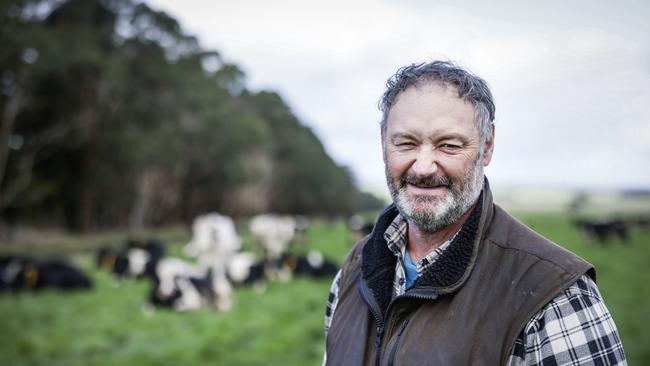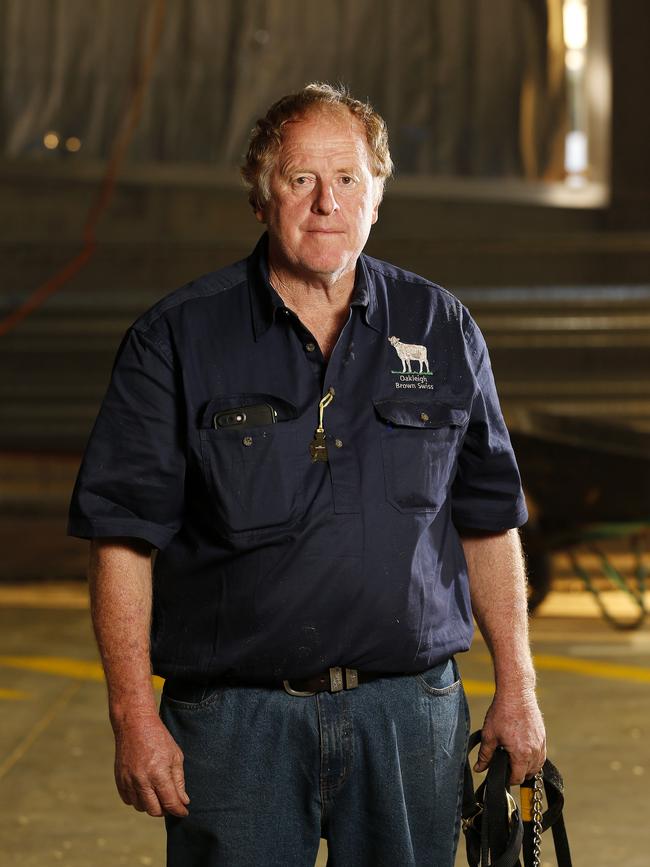Australian dairy industry: Why are farmers still leaving the sector?
A series of near-record farmgate prices in recent years has made Australian dairy lucrative, yet hundreds of farmers exiting the industry.
When the going gets tough, the tough get going.
It’s a line used by everyone from self-help gurus to Caribbean Queen crooner Billy Ocean.
Dairy farmers know the maxim better than most, for when the dairy dollar is down and climatic conditions not blowing their way, working in the dairy pit can truly be the pits.
So how tough is 2024?
According to the balance sheets, it’s not.
The farmgate prices paid to Australian dairy farmers are at near-record levels.
Farmers in Victoria are being paid more than $9 per kilogram milk solids, up from $6 only a few short years ago.
North of the Murray, Queensland and NSW farmers are being paid upwards of $11 and $12 per kilogram milk solids, with the thirsty Brisbane and Sydney milk markets often forced to truck in Victorian milk up the highway.

Money for milk is on the up and another cash conundrum is abating.
Input costs — from electricity to fertiliser — certainly aren’t cheap but they’re not at the teeth-grinding levels of the first months of the coronavirus pandemic in 2020, when cargo clogging sent costs sky-high.
And they’ve eased since the initial shock of Russia’s February 2022 invasion of Ukraine.
Dairy Farmers Victoria president Mark Billing says this year is shaping up to be the best of this decade — that is, if farmgate prices hold steady or rise in June.
“The input cost pressures are still there but they’ve eased back a bit or they’ve stabilised,” the southwest Victorian farmer says.
“There were record high prices paid in 2021, ‘22 then pretty high into 2023 but the input costs were also high, so the margins weren’t great. Conditions are better now that some of those inputs have eased off.”

Despite all this favourable financial news, record high prices haven’t translated to a refreshed dairy sector for the 2020s. There’s been a sharp decline in the number of dairy farmers across Australia — particularly in its heartland state of Victoria.
Data from Dairy Food Safety Victoria confirms there were 2774 bovine dairy licences statewide by the end of the 2022-23 financial year, down more than 200 from the 2984 recorded at the end of the 2021-22 reporting period. The 2022-23 figure represents a drop of more than 36 per cent from the 2012-13 total of 4284.
Victoria’s dairy farm numbers have been in steady decline since the early 2000s deregulation of the sector, but the 2016 clawback by Fonterra and Murray Goulburn accelerated the downward trajectory.
That’s not to say there isn’t decline in other Australian states — the downward dairy trend is a nationwide phenomena.
Queensland was once a dairy powerhouse.
Back in 1980, the Sunshine State boasted 3052 dairy farms — which halved by the time of the 2000 deregulation. Today, only 300 dairy farms are registered across the state.
EastAUSmilk president Joe Bradley says the blame for the decline lies with supermarket giants Coles and Woolworths, with the NSW and Queensland market hardest hit by the 2010s dollar-a-litre strategy.

“In my part of the world near Brisbane, there were 64 dairy farmers in the 1980s and by 2000 there were 26 farmers. Now I’m the only one left in the area,” Bradley says.
“The co-operative model was the dominant processing model in the 1980s and ’90s. Now, most of the big players are multinationals.
“That top-down approach from multinationals like Lactalis, Fonterra, Saputo, is part of the reason behind the decline.
“The banks also play their part. Westpac, ANZ, Commonwealth, National – none of the big four are giving young farmers a leg up into owning their first farming property. In fact, they’re making it increasingly difficult. So there’s several reasons why there’s been that decline in dairy farm numbers.”
While the decline in farm numbers doesn’t necessarily mean an evaporation of the national milk pool, Australia’s dairy output hit a 30-year low last financial year, at 8.125 billion litres. By the closing months of last season, the low-ball figure was anticipated by analysts, with flooding in the Goulburn Valley and NSW’s Northern Rivers playing a role.
Rabobank industry analyst Michael Harvey says the pool is set to refill in the 2024-25 financial year, with 2023-24 shaping up to be a period of consolidation of the sector.
“There are some positive price signals. International conditions are certainly better for Australian dairy than they were six to nine months ago,” he says. “Milk supply in Australia is starting to stabilise, on the back of a period where we’ve seen significant contraction in the national milk pool.”
Released last week, Dairy Australia’s situation and outlook report estimates a 1 per cent rise in Australia’s milk production to clock in at 8.2 billion litres by June 30.
But it is still relatively low by historical standards.
That contraction in the milk pool has made it a sellers’ market for farmers, who are now in a better bargaining position than they were only five years ago due to the federal government’s mandatory dairy code of conduct. The code forces processors to lock in an opening price one month out from the start of the financial year, and makes it difficult for the factories to revise their prices downwards.
Implemented in July 2020, the code is popular with farmers and receives bipartisan support, but processors have urged a rethink.

Australian Dairy Products Federation executive officer Janine Waller has called for the federal government to review the code and give factories more leeway on pricing, particularly after a steep fall in international commodity prices in mid-2023.
The high cost of production in Australia has triggered a wave of foreign imports, most notably from New Zealand, flooding on to supermarket shelves and undercutting Australian cheese and butter sales.
“Without a viable domestic dairy processing sector, enjoying Australian-made and branded dairy products like fresh milk, cheese, and yoghurt would be impossible,” she says. “More than this, the $6.1 billion we pay to farmers annually, the 70,000 jobs we create, of which most are in regional Australia, and our $16 billion annual contribution to the economy would disappear.”





